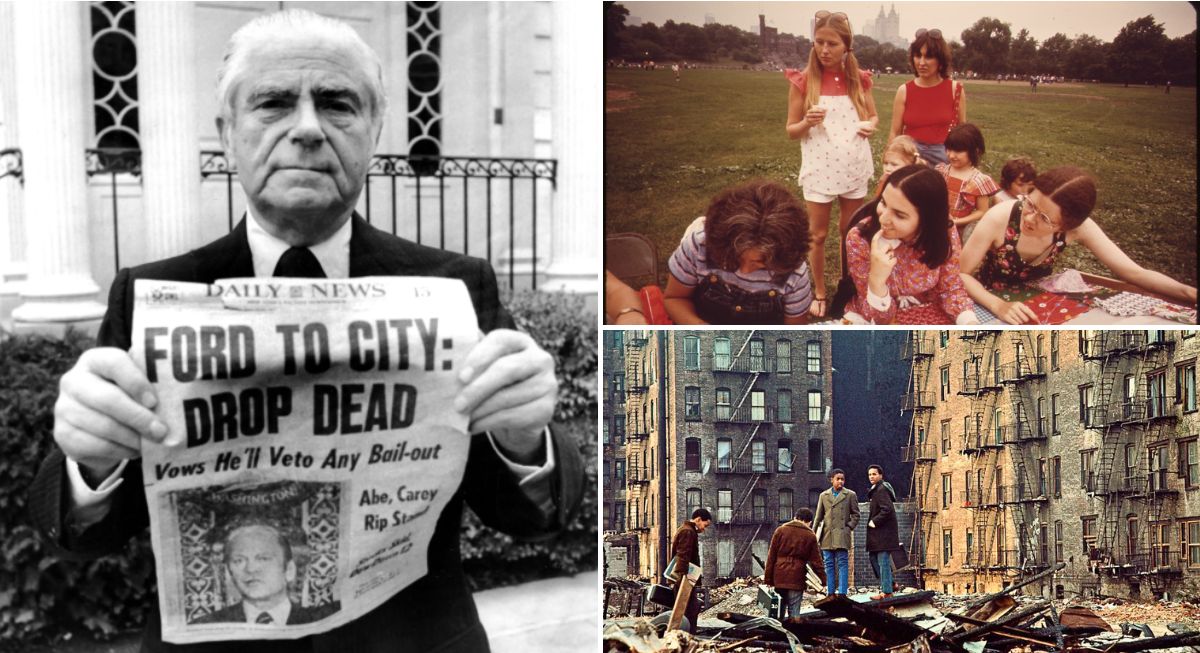New York in the 1970s was stretched thin. Budget cuts, blackouts, and a rising crime rate shaped daily life. These photos offer a glimpse into that atmosphere with broken sidewalks, handwritten signs, and storefronts that made do with what they had. What’s in the frame is exactly what was there.
Everyday Life Outside a Tenement

Credit: Instagram
Lower East Side tenement buildings like this one were built in the late 19th and early 20th centuries to house waves of immigrants. By the 1970s, many had fallen into disrepair. Despite aging infrastructure, stoops remained central to daily life as a shared space for neighbors to talk and observe.
Typical Get-Together At a Park
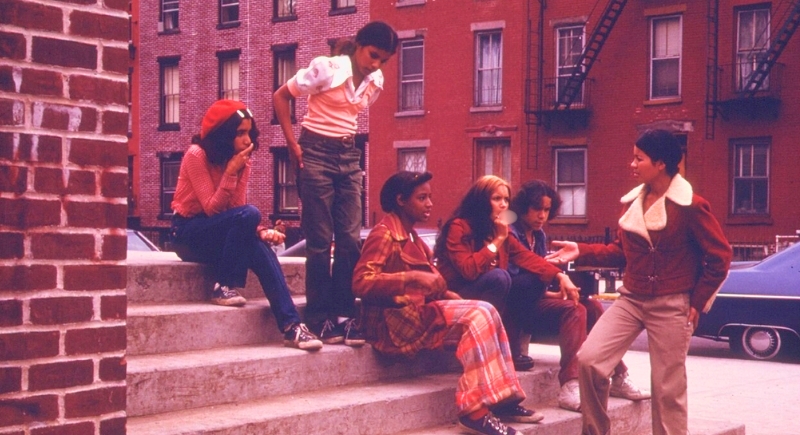
Credit: Wikimedia Commons
This group of teenagers, captured in South Williamsburg, 1974, can be seen chatting at Lynch Park, a common gathering spot in the neighborhood. Their fashion reflects the era’s street style, shaped by music and local trends. Parks like this served as vital social hubs in densely populated, working-class parts of the city.
Fire in Harlem
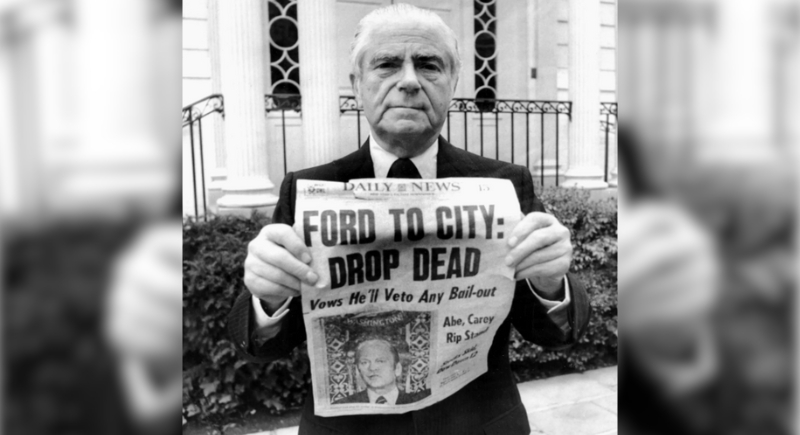
Credit: X
After President Ford rejected New York’s request for a federal bailout, Mayor Abe Beame stood holding a newspaper with the headline Ford to City: Drop Dead. The image became one of the most memorable of the decade and symbolized the federal government’s refusal to intervene during the city’s crisis.
Oil Slick at the Statue of Liberty

Credit: Wikimedia Commons
A greasy film circled the Statue of Liberty in 1973. It was the result of years of environmental damage that had gone largely unchecked. Pollution had become so common in the city’s waterways that even national landmarks were regularly surrounded by oil, industrial waste, and sewage without meaningful cleanup efforts.
World Trade Center Completion

Credit: flickr
New York marked a rare triumph when the World Trade Center towers were completed. For a brief moment, they were the tallest buildings in the world. The gleaming structures stood in sharp contrast to the widespread deterioration surrounding them and offered a glimpse of future growth in a struggling city.
Children Crossing Rubble in East Harlem
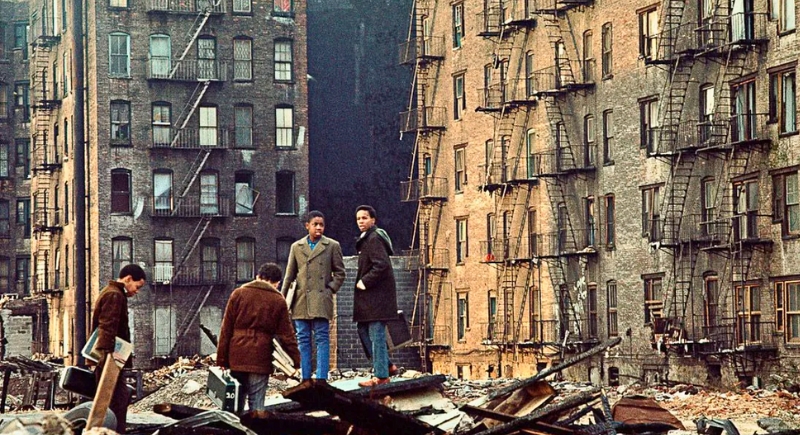
Credit: Reddit
To get home from school, children in East Harlem had to pick their way through crumbling sidewalks and collapsed buildings. Scenes like this were not unusual in neighborhoods hit hard by arson and neglect. Entire blocks were left in ruins while city services struggled to keep up or disappeared entirely.
Trash Can Fire in Harlem
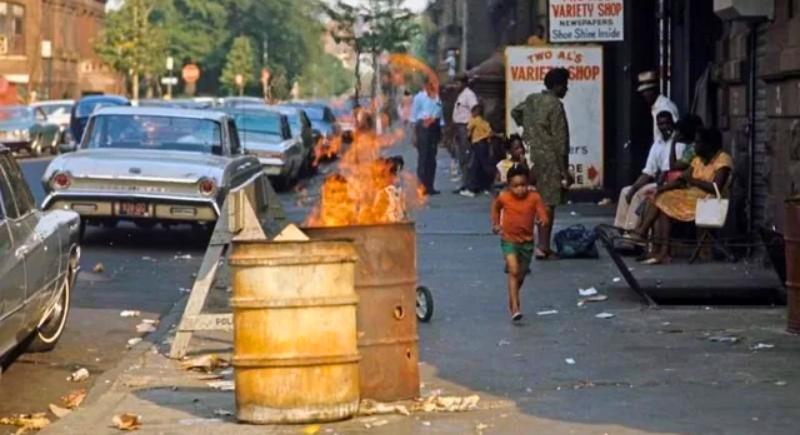
Credit: Reddit
On a cold day in Harlem, a boy passes a trash can that has been set on fire. Without reliable heat in many buildings, makeshift fires became a way for residents to stay warm. This kind of improvisation highlighted how basic public services had failed large sections of the population.
Welcome to Fear City Brochure
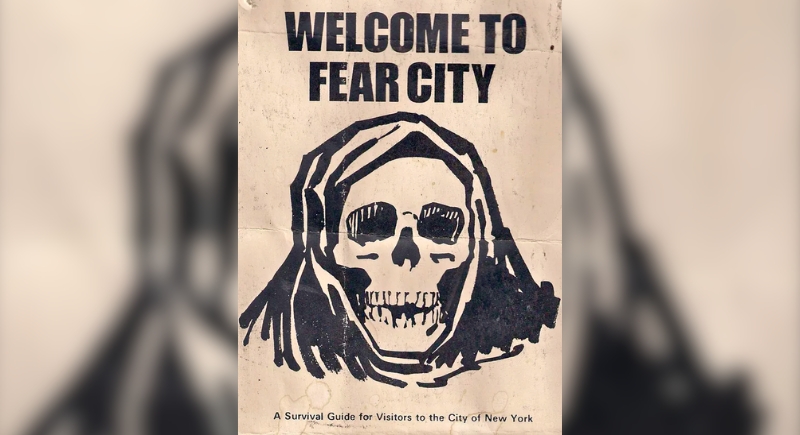
Credit: Reddit
Tourists arriving at New York airports in 1975 were handed a brochure called Welcome to Fear City. The pamphlet included tips like avoiding subways and staying in after dark. Though created by protesting city workers, the message deepened the public's perception of New York as unsafe and unpredictable.
Graffiti in the Subway

Credit: Wikimedia Commons
Inside a subway car, graffiti covered nearly every surface. The colorful layers were viewed by some as art, others as destruction. Either way, they showed how the transit system had been left to decline.
Waiting for the Subway
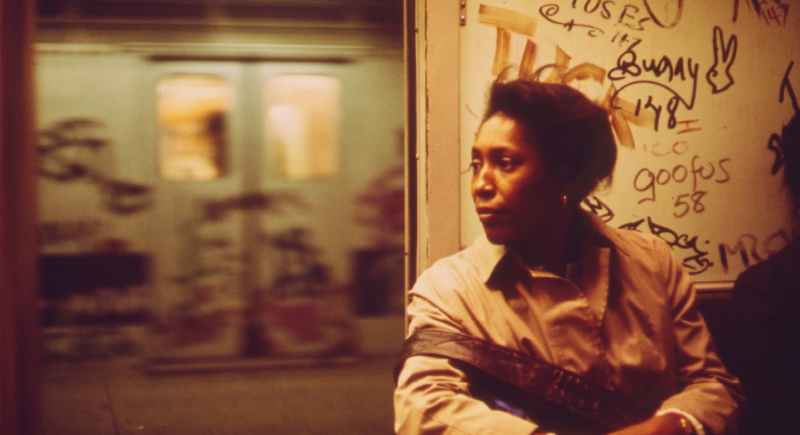
Credit: flickr
A woman waits alone on a dimly lit subway platform. The emptiness says as much as the graffiti. Public transportation had become a place where riders often felt unsafe. The subway was neglected both physically and socially during much of the decade.
Fire Hydrant on Avenue C

Credit: flickr
In the Lower East Side, a group of boys turned an open fire hydrant into a summer escape. The water blasted into the street as they cooled off under the city’s hot sun. These moments brought joy to neighborhoods that otherwise had few safe or recreational spaces left.
Barbie Dolls on a Harlem Stoop

Credit: Reddit
Girls gathered on the steps of a Harlem brownstone to proudly display their Barbie dolls. Even as the city fell into crisis, children continued to create their own worlds and friendships using the space they had outside their homes.
Quilting Bee in Central Park

Credit: Wikimedia Commons
A quilting bee in Central Park brought together a community bound by tradition. Participants stitched cloth and shared conversation on a warm afternoon. Public gatherings like these gave residents a sense of continuity.
Teenagers in Lynch Park

Credit: Wikimedia Commons
Lynch Park in South Williamsburg served as a social center for teenagers. With few alternatives, local parks became the backdrop for friendship, rest, and conversation. These green spaces were vital for young people growing up in tight living conditions.
Empty Streets in Dumbo
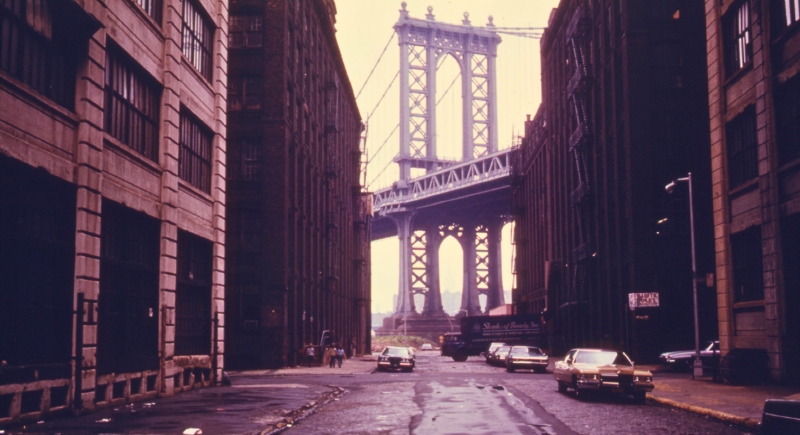
Credit: Wikimedia Commons
Dumbo in the 1970s was a very different place from the one seen today. Its warehouses were empty, and the streets were mostly quiet. At the time, few would have predicted its transformation. The neighborhood was removed from the energy found in more crowded areas.

